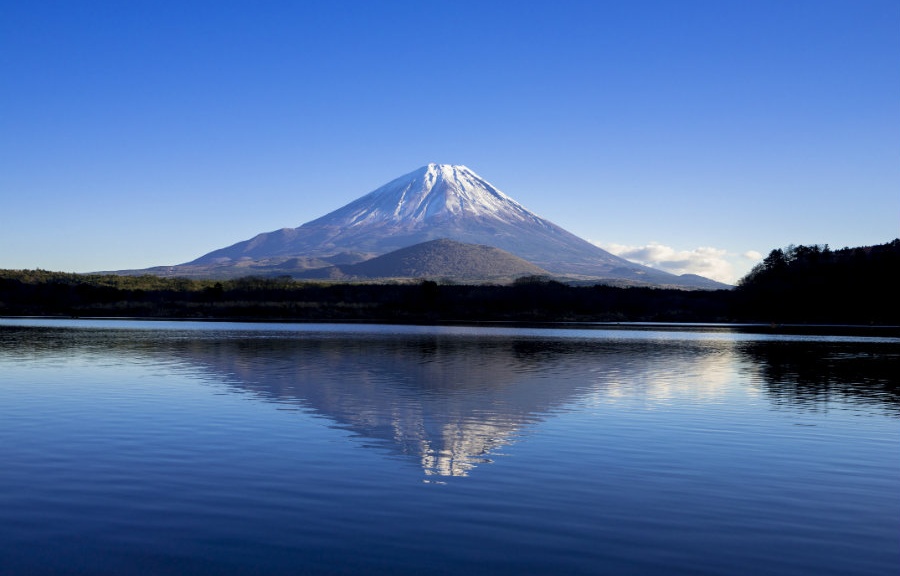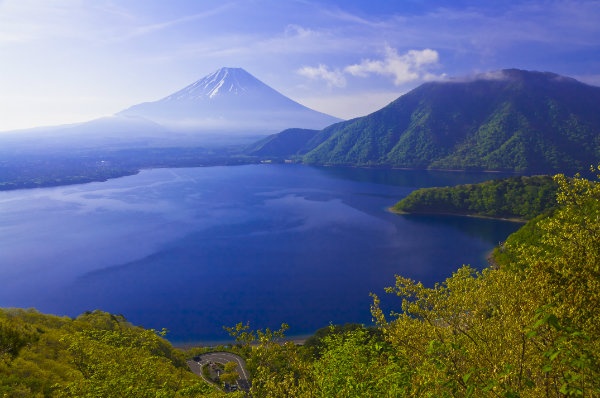Mount Fuji Tourist Info

The climbing season for Mount Fuji runs for only two months between July 1 and late August each year. Approximately 300,000 people hike to the top of the mountain via one of four trails (Fujinomiya, Gotemba, Subashiri and Yoshida), and many more travelers visit the Fuji Five Lakes and the surrounding areas each season.
By Highlighting Japan
The closest train stations are either Fujinomiya Station, Gotemba Station or Kawaguchiko Station. You can catch local buses departing to the Fifth Station of the mountain from each station. Alternatively, it is also possible to take a tour-bus shuttle that's operated by Fujikyu Shizuoka, Fuji Kyuko and Fujikyu Yamanashi bus lines that run daily during the open season.
For those hikers who wish to try visiting Mount Fuji without climbing all the way to the peak, 13 nature trails have been built at the lower reaches of the mountain that traverse forests, hills, streams and fields and have a longer open season than the national park at the top. Several prefectural parks can also be found in the vicinity of Mount Fuji that offer options for camping, swimming, picnicking and cycling.
Guide books are available to provide basic information related to ascending Mount Fuji, including guidelines for manners and safety, as well as instructions on adequately preparing for the challenges of the climb. Various volunteer groups and nature studying groups have formed the Mount Fuji Network, which copes with environmental conservation synthetically.

The summit stands at 3,776 meters (12,388 ft) in height, and weather can be unpredictable at higher elevations, so altitude sickness and hypothermia are concerns for mountain climbers, as well as adequate water supplies and proper boots and clothing. Visitors must come prepared, since the ascent to the top is a physical and mental challenge.
As for tourism destinations beyond the mountain itself, many cultural and natural wonders draw people to the region, such as the Fuji Five Lakes, the Sengen shrines, Shiraito-no-Taki waterfalls and Miho-no-Matsubara pine tree grove. You can enjoy boat riding, driving and camping around the Fuji Five Lakes. In the spring, cherry blossoms and azaleas color the beautiful views of the mountain, while summer brings lavenders and hydrangeas. People are delighted to see colored leaves in the fall, or the mountain covered with white snow in the winter. Many visitors look forward to seeing fireworks displayed above Lake Kawaguchi in both summer and winter, and in addition to nature, a number of museums and art galleries are dotted around the lake.
Prefectural delicacies are also a draw for travelers. Yamanashi Prefecture is an abundant fruit-growing region that produces peaches and grapes, whereas Shizuoka is famous for its green tea, mikan (Satsuma oranges/tangerines) and seafood, so visitors are encouraged to try these locally produced goods as well.
Most travelers to the Mount Fuji region are not only struck by the magnificence of the countryside, but also the bountiful foods and varied flavors that are on offer.




